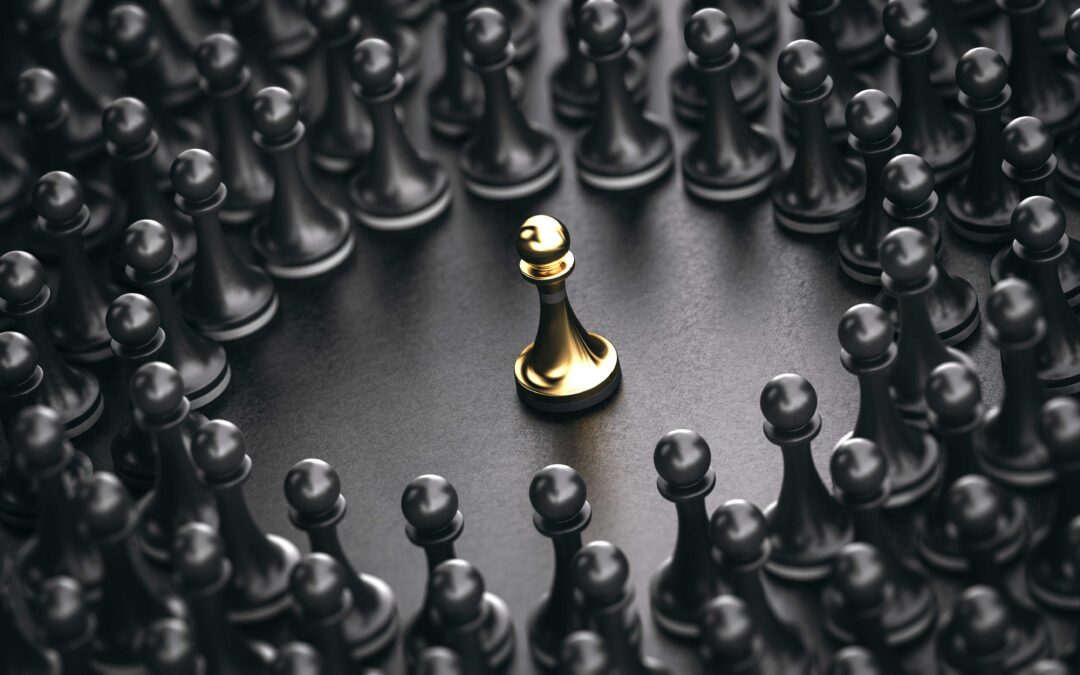This is the third post in “Complicating the Narrative on Bridging and Division,” a six-part blog series from CEP and PACE (Philanthropy for Active Civic Engagement). This series seeks to highlight community-informed perspectives from five leaders in the build-up to the second event in CEP’s 20th Anniversary Virtual Learning Sessions: “Are We Better Off Divided? Philanthropy’s Role in Moving America Forward.”
For the third piece in this blog series on bridging work and its implications for philanthropy, PACE Executive Director Kristen Cambell interviewed Andrew Hanauer, CEO of the One America Movement, a national nonprofit that works to confront toxic polarization and division by equipping faith communities to work together across political, racial, and religious divides to solve problems that matter.
In the conversation, Hanauer discusses the risk that toxic polarization poses to Americans’ ability to work toward justice and make real progress on issues affecting their communities. He also delves into how the patient, long-term work of bridging can counteract that toxicity and build more resilient and understanding communities.
You can watch the full video of Cambell and Hanauer’s conversation below, as well as read several passages drawn from the interview, which have been edited for length and clarity.
Q: We don’t have a tendency to naturally come together; we have a tendency to get even more divided. So when you think about bridging divides, what does bridging mean to you? How have you come to define or understand that as a concept and, conversely, what do you think others often misunderstand about bridging as a concept?
A: Bridging means reducing the toxicity. So, to use our constituents, if you have a Southern Baptist church and a Progressive Reform synagogue, bridging doesn’t mean believing that everyone in that church and everyone in that synagogue is going to agree on everything. They don’t, they absolutely don’t. But it means getting rid of the toxicity involved in what’s keeping them apart — and that toxicity includes misinformation, it includes misperceptions about who the other group is and what they believe, it includes the false belief that they don’t have anything they can work together on, or they don’t have anything in common.
So when we think of bridging, I think too often we see it as, “We’re going to get the most extreme person here and the most extreme person here and we’re going to bring them together, and then we’re going to put them on the nightly news for 30 seconds so people feel good about themselves.” I think that’s a caricature. Those stories are important, but I think that what we really need to be doing is working with communities to move them away from toxicity and towards healthier perceptions, perspectives, and behaviors.
Q: What can removing toxicity or “turning down the temperature” actually solve and what can it not?
A: I think it’s going to make it more likely that we collaborate on things that matter to us in our local communities. It’s going to make us more resilient to the garbage that comes at us from social media, from our national politics, and from the “Polarization Industrial Complex” that makes money off of telling us how much to hate each other.
As a person of faith myself, there’s a spiritual component to this, which is that toxic polarization is bad for us as people. It makes us more fearful. It makes us more hateful. It makes us more smug. It makes us more sure that we are right about everything. Sometimes at One America, we ask people to do a thought exercise of closing their eyes and saying out loud, “Everything I believe about the world is correct. I am the smartest, most right person of all 7 billion people on earth.” When you think about how absurd that is, it should at least get us to start to walk down that street of saying: maybe we could learn something from other people?
Q: What would you say to people who might be skeptical about bridging about where they’re fair in their critiques?
A: First of all, I think the people who care about bridging need to do a better job of talking about it. If you tell me that bridging or caring about polarization means that we all just need to be civil to each other, or that we need to just get along or be friends with someone who maybe believes that we’re not human, then of course people are going to have a negative reaction to that. And not only do I not blame them, I share that reaction! The idea that bridging runs counter to the idea that we need justice is partly a product of failures on the part of people like me to adequately talk about [bridging] in a way that doesn’t dismiss people’s legitimate concerns.
At the same time, there has to be a clear communication from people who care about this issue about the effect that toxic polarization has on our ability to solve any problems in this country. We are getting so good at signaling our virtues through yard signs and social media posts, and I think we need to really challenge the idea that that’s the equivalent of actually achieving justice. If we really want to achieve justice, the question is: How do we get there? I think there’s a lot to be said for the idea that we have more allies than we realize, and that we’re alienating them by not understanding what they actually believe and who they are.
Q: What would you hope that funders would understand about bridging work? How might you encourage them to think about their role and their place in this space?
Someone recently talked about it like this: “It’s not a game, it’s a garden.” By that I mean that this isn’t something we’re going to win this year or next year. It’s about building ongoing resilience to toxicity, and that means that, as long-term work, it’s not always going to be the most exciting, most pressing thing on your agenda. But if we don’t do it, we get what we’ve seen happen over the last couple of years.
People want shortcuts. They want an app. They want a Facebook policy change. They want an ad campaign that’s going to reach a hundred million people at the Super Bowl and somehow depolarize them…This work takes patience, and it requires something different than having the sleek new thing that you’re going to put out there that will magically change the world. I think we need to make sure that [this understanding is] embedded into our theory of how we make change on this issue.
Andrew Hanauer is CEO of the One America Movement. Follow him on Twitter at @AndrewHanauer.
We are interested in diversifying perspectives and democratizing this conversation. If you would like to share your thoughts on the questions we’re posing to respondents in this series, please do so here.


